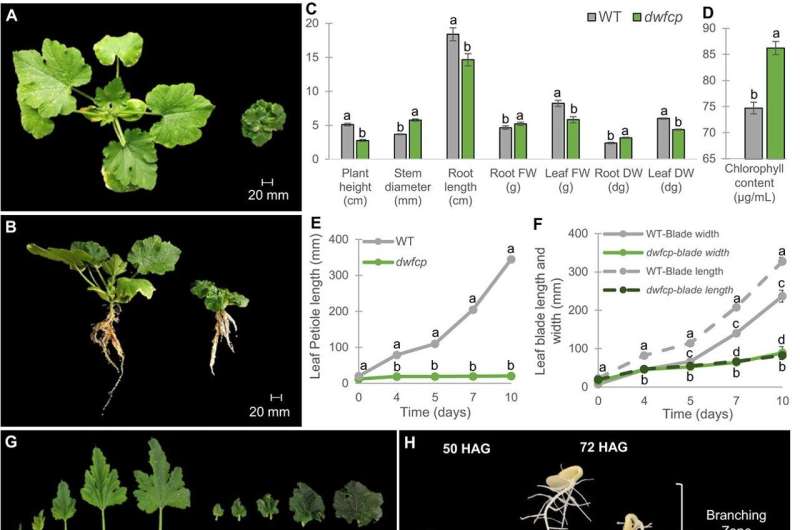This article has been reviewed according to Science X's editorial process and policies. Editors have highlighted the following attributes while ensuring the content's credibility:
fact-checked
peer-reviewed publication
proofread
Shrinking statures, growing insights: Unraveling the genetic underpinnings of dwarfism in squash

In the quest to bolster crop yields and fortify plants against environmental stressors, the delicate interplay of phytohormones stands as a keystone. Yet, our grasp of these genetic levers, particularly those dictating plant stature and resilience to salinity, remains tenuous. Bridging these knowledge gaps is imperative for cultivating crops that can thrive in the face of environmental adversity.
From the Agrifood Campus of International Excellence at the University of Almería, an article appears in the journal Horticulture Research, illuminating the effects of a mutation in the CpDWF5 gene. This research, published on February 23, 2024, meticulously details the genetic ripples that cascade from a single nucleotide change, influencing the very fabric of squash plant life.
Diving into the genetic depths, the study presents a detailed portrait of the dwfcp squash mutant, wrought by a mutation in the CpDWF5 gene. This alteration chokes the production of brassinosteroids, truncating the plant's stature and prompting a dense, dark foliage.
Paradoxically, the same mutation endows the plant with a superior ability to withstand salt stress, hinting at a sophisticated genetic crosstalk between growth hormones and stress adaptation. The findings are a testament to the nuanced relationship between genetic mutations and their multifaceted impact on plant physiology.
Dr. Cecilia Martínez, a pivotal voice in the study, underscores its broader implications, "Our findings bridge gaps in our understanding, offering a genetic roadmap for enhancing crop robustness. This is more than an academic pursuit—it's a step towards nurturing crops that can weather the environmental vagaries, a cornerstone for sustainable agriculture."
The implications of this genetic revelation are far-reaching, beckoning a future where crop breeding is guided by a deeper genetic insight. With the CpDWF5 mutation as a case study, the pathway is paved for developing plants with an innate armor against environmental stress, potentially enhancing agricultural practices and fortifying global food security.
More information: Sonsoles Alonso et al, A mutation in the brassinosteroid biosynthesis gene CpDWF5 disrupts vegetative and reproductive development and the salt stress response in squash (Cucurbita pepo), Horticulture Research (2024). DOI: 10.1093/hr/uhae050
Journal information: Horticulture Research
Provided by TranSpread





















